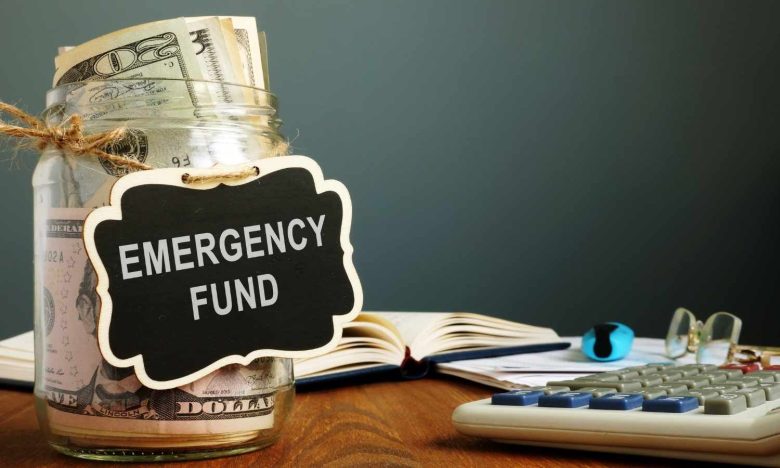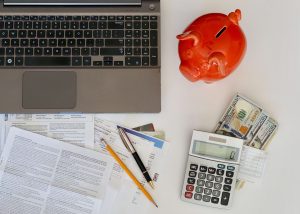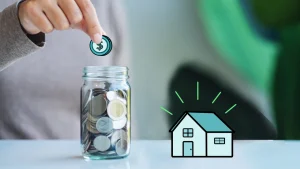An emergency fund can help protect you against expensive loans if the unexpected strikes, but where should you start? Here’s some guidance from The Balance. Save a portion of your discretionary spending each month—even if it seems intimidating at first—even if the recommended amount seems daunting. Set a smaller goal at first and gradually increase it over time. Also take advantage of any unexpected money coming your way, such as tax refunds, work bonuses, or gifts in kind, to further expand your savings account.
1. Create a Budget
An emergency fund is an invaluable way to avoid financial distress. By creating a buffer between expenses and income, an emergency fund allows you to avoid high-interest debt and give yourself time to recover after experiencing unexpected setbacks.
Experts advise building up an emergency fund that can cover three to six months of expenses, though this may seem an insurmountable goal at first. Starting small (such as $500) can make reaching this goal more manageable. Utilizing strategies such as budgeting and saving windfalls (like tax refunds or gifts from relatives) to build an emergency fund. Automating savings transfers may help you reach your goals more rapidly.
2. Set a Goal
Many people don’t have the luxury of saving up three to six months worth of expenses at once, so setting a realistic goal and working toward it will build momentum and motivation to keep saving. Reaching each small goal will build upon itself.
Consider other means of earning extra cash, like selling unwanted items or receiving tax refunds or gifts from family and friends. Setting aside this emergency fund money will allow you to feel financially secure no matter what life throws your way. Emergency funds should be stored in an account that’s easy to access and offers a competitive interest rate; that way, you won’t be tempted to withdraw it for non-emergency use.
3. Set Up Automatic Transfers
An emergency fund can reduce financial stress and help you make better decisions while decreasing the likelihood of turning to high-interest credit cards or personal loans that could spiral out of control and leave you in debt. Unexpected expenses such as car repairs, job termination, and major medical bills can arise unexpectedly and lead to financial devastation if you are not adequately prepared. Without savings to fall back on, these unexpected costs could prove financially catastrophic.
Establishing automatic transfers from your checking account can help you create a savings cushion over time. Your money may go into either a regular savings or money market account—both are easy access accounts with additional interest earnings potential.
4. Put the Money in a Liquid Account
When unexpected emergencies arise, it’s essential that your emergency fund remain intact. Relying on credit cards or loans alone to cover these expenses could leave you in debt and leave you vulnerable in the future. Make the most of tax refunds or inheritance by depositing windfalls like tax refunds into an emergency savings account that’s separate from your regular checking or savings account and easily accessible.
Establishing realistic goals when building up an emergency fund is also vitally important. Starting small—like saving one month’s expenses—may make the process seem more manageable, and once that goal has been met, you can set higher ones and continue progressing forward with saving.
5. Make Savings a Habit
Saving enough to cover three to six months’ expenses may seem impossible, especially if you live paycheck to paycheck. To make it more attainable, set yourself up for success by setting an achievable savings target. Create an automatic savings habit. Set up regular transfers and employ strategies like budgeting and saving windfalls (such as tax refunds) to build or augment your emergency fund over time.
Emergency funds should only be used to cover financial emergencies—not daily expenses or “wants.” To avoid temptation, keep these funds in a separate account that’s difficult to access, like a savings or money market account.
6. Put It in a High-Yield Savings Account
Make sure your emergency savings are kept separate from other savings accounts so they won’t tempt you to use them on non-emergency items. Savings or money market accounts offer suitable solutions with low minimum deposits and convenient withdrawal options—ideal emergency savings funds!
Set up automatic transfers from your checking to savings/money market accounts as a great way to build an emergency fund faster. This approach beats using credit cards or loans, which come with fees and interest charges!
7. Make Savings a Priority
Make savings a priority, whether for an emergency fund, retirement savings, or other financial goals. By making it a regular part of your routine, you have a much greater chance of achieving your goal of saving.
If you find yourself with some extra cash from bonuses or tax refunds, save it instead for emergency savings instead of spending it elsewhere—this way you’ll avoid using your emergency fund for non-essential purchases like vacations and home improvements that won’t help with emergencies. Emergency savings accounts are critical to reaching financial milestones like buying a house or retiring comfortably. To do this successfully, it’s necessary to develop and execute a comprehensive plan to build and preserve such funds.
8. Make Savings a Habit
Your emergency savings should cover at least six months’ worth of expenses—this may seem intimidating if you’re just beginning to save or live paycheck-to-paycheck. However, it’s important to approach this challenge gradually.
As well, it’s essential to differentiate between expenses that qualify as emergencies and those that should be handled through non-emergency funds. Car repairs and family emergencies should definitely use up your emergency fund, while impulse purchases would do better with budgeted funds.
As you work to establish an emergency savings cushion, don’t neglect other financial obligations, such as paying off debt and saving for retirement or home purchases. By making saving part of your lifestyle and making savings an integral part of your budget plan, it won’t take long until you achieve your goal of having an emergency savings cushion.




